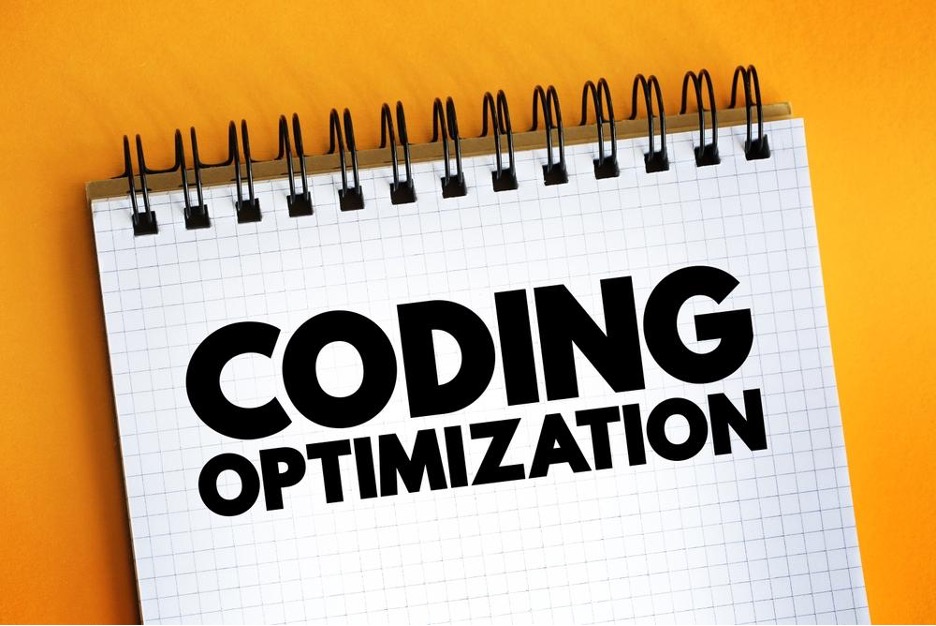This article is about Software Development
Java and JavaScript: How are They Different?
By NIIT Editorial
Published on 16/06/2023
Java and JavaScript are two of the most used programming languages in the industry. They share a few letters in their names, but their syntax, structure, and applications are quite different from one another. In order to make educated selections about which language to utilise for specific projects, developers need to be aware of these distinctions.
This article will serve as a primer on Java and JavaScript, covering the language's origins, grammar, and some of its most fundamental capabilities. The article will next explore the distinctions between the two languages, focusing on areas such as grammar, use, performance, and scalability.
Lastly, it will provide advice on which language to use for certain tasks, as well as explore the similarities and interoperability between the two.
Table Of Contents
- Basics of Java and JavaScript
- Differences in Language Structure and Syntax
- Differences in Usage and Application
- Differences in Performance and Scalability
- Commonalities and Interoperability
- Choosing Between Java and JavaScript
- Conclusion
Basics Of Java and JavaScript
Java, a general-purpose programming language developed by Sun Microsystems' James Gosling and colleagues in the mid-1990s, was designed with the mantra "write once, run everywhere" in mind. It was developed with portability in mind, so it may be used on any computer with a Java Virtual Machine (JVM). Java's strength, security, and portability led to its rapid rise to prominence.
Nevertheless, Brendan Eich of Netscape Communications developed JavaScript, another programming language for web browsers, in the middle of the '90s. Mocha, then LiveScript, and finally JavaScript were only some of its previous names. Originally conceived as a means to inject life into otherwise static web pages, JavaScript has expanded to become a full-fledged programming language for both client and server-side applications.
Syntax and Structure of Java and JavaScript
Although they may share certain similarities, the syntax and structure of Java and JavaScript are distinct. As Java is statically typed, it is necessary to define the type of a variable before it can be used. The kinds of variables in JavaScript, on the other hand, are defined dynamically during runtime.
The Java Virtual Machine (JVM) is responsible for running compiled bytecode of Java programmes. On the other side, the browser or runtime environment interprets JavaScript code. In Java, blocks of code are enclosed in curly brackets and statements are terminated with semicolons; in JavaScript, the two are used interchangeably.
Key Features and Capabilities of Java and JavaScript
Java's rigorous type checking is one of the language's defining features since it guarantees error-free code at compile time. Inheritance, encapsulation, and polymorphism are just a few of the characteristics that help make it such a strong object-oriented language. Java is used for a wide variety of application types, including corporate apps, Android apps, and desktop apps.
Yet, JavaScript's dynamic typing is what makes it so popular among developers. It is a sophisticated functional programming language with features like closures, first-class functions, and prototypes. Web apps, server-side applications, and desktop applications built using frameworks like Electron are all possible with JavaScript.
Differences in Language Structure and Syntax
1. Object-Oriented vs. Functional Programming
Java was created with the concept of objects and their relationships in mind. Java objects are more convenient to work with and reuse because they conceal their internal state and behaviour. Classes and objects are the building blocks of a Java application.
But JavaScript is different because it is a functional programming language, which means it is built on the concept of functions and how they work together. Variables, parameters, and the values returned by functions are all possible in JavaScript. To design and implement programmes, JavaScript makes use of functions and objects.
2. Typing and Variables
As Java is statically typed, it is necessary to define the type of a variable before it can be used. This improves Java's reliability and safety. In addition to reference types like arrays and objects, Java also supports a broad variety of basic types including int, double, and boolean.
The kinds of variables in JavaScript, on the other hand, are defined dynamically during runtime. This increases JavaScript's adaptability, but also its mistake potential. Just numbers, strings, booleans, null, undefined, and objects are supported in JavaScript, but Java supports many more.
3. Control Structures
Java relies on tried-and-true constructs for programme flow control, including if-else expressions, for loops, and while loops. In addition, try-catch blocks and switch statements are available in Java to manage unexpected outcomes.
JavaScript makes use of standard control structures like loops and conditionals, but it also includes some of its own, such as the for...in loop, which may be used to iterate through an object's attributes. The try-catch construct is available in JavaScript as well.
3. Exception Handling
Developers can easily detect and respond to mistakes in Java because to the language's powerful exception handling system. You can either catch and manage exceptions in try-catch blocks or toss them for higher-level code to deal with.
JavaScript's throw command is used to generate exceptions, and the try-catch statement is used to catch them. However, unlike Java, JavaScript does not have a robust set of built-in exceptions and instead depends heavily on user-defined error handling.
Differences in Usage and Application
1. Client-Side vs. Server-Side Programming
Both the client and the server may be programmed in Java. Client-side Java applets were common, but JavaScript has now supplanted them. Enterprise applications, online apps, and application programming interfaces (APIs) are all developed in Java and deployed to servers.
JavaScript's primary use is client-side programming, where it's utilised to give websites a more interactive and dynamic feel. Yet, JavaScript is also being utilised for server-side development, especially with the emergence of server-side JavaScript frameworks like Node.js.
2. Web Development vs. Software Development
Enterprise applications, desktop programmes, and even Android apps are being written in Java. To create websites, programmers often pair Java with a server-side framework, such as Spring or Struts.
In contrast, JavaScript is most often used in web development, where it serves to enhance static web pages with interactive features and dynamic behaviour. Yet, JavaScript is also being utilised for software development, especially with the arrival of server-side JavaScript frameworks like Node.js.
3. Popular Frameworks and Libraries For Each Language
Spring, Hibernate, Struts, and Android are just a few of the many frameworks and libraries available for use with Java. These frameworks offer services like dependency injection, object relationship modelling, and model view controller.
In addition to jQuery, React, Angular, and Vue.js, JavaScript offers a wealth of other frameworks and tools. Features like document object model (DOM) manipulation, component-based design, and data binding are available thanks to these frameworks.
Differences in Performance and Scalability
1. Comparison of Runtime Environments
The Java Virtual Machine (JVM) is a software implementation that runs Java applications and separates them from the underlying hardware. As the JVM handles memory management and garbage collection, Java applications may run on any platform.
With a JavaScript runtime environment like Node.js, JavaScript applications may be executed in a browser or on a server. Mobile app development utilising frameworks like React Native and Ionic also makes use of JavaScript.
2. Memory Management and Garbage Collection
Due to automated memory management and garbage collection, the JVM is in charge of handling memory allocation and deallocation. As a result, memory leaks and other memory-related problems are less likely to occur.
Nevertheless, JavaScript makes use of trash collection mechanisms included within the host browser or runtime. Memory leaks and other performance concerns might result from improper management of this.
3. Performance Benchmarks and Metrics
The speed and scalability of Java are well-known, particularly in the context of corporate applications. Just-in-time (JIT) compilation of Java applications into machine code helps optimise frequently performed code and boost performance.
Nevertheless, as JavaScript is an interpreted language, it may be less efficient than Java. Nonetheless, JavaScript's speed has greatly improved over the last several years because to the development of JIT compilers and other improvements.
Commonalities and Interoperability
1. Common Grammar and Vocabulary
The if-else statement, the for loop, and the while loop are all examples of syntax and keywords that may be found in both Java and JavaScript. As a result, developers will have a simpler time moving back and forth between the two languages.
2. Compatibility with Many Languages
By the use of application programming interfaces and frameworks, Java and JavaScript may be combined with other languages. Java, for instance, may be used to create native Android apps that are compatible with web apps written in JavaScript. When combined with other web technologies like HTML and CSS, JavaScript becomes even more powerful.
Choosing Between Java and JavaScript
1. Factors to Consider when Selecting a Language
When choosing between Java and JavaScript, some factors to consider include:
- Purpose of the application
- Target audience
- Development team expertise
- Scalability requirements
- Performance requirements
- Integration with other technologies
2. Comparison of Popular Use Cases And Industries
Enterprise software, mobile apps, and websites all make use of Java. It's also commonplace in the realms of finance, healthcare, and government.
JavaScript is widely utilised in the creation of websites, user interfaces, and mobile applications. It's also utilised in the movie and video game business.
Pros and Cons of Each Language
Java
1. Some Pros of Java Include:
- High performance and scalability
- Platform independence
- Strong typing and object-oriented programming
- Large community and ecosystem
- Widely used in enterprise and government sectors
2. Some Cons of Java Include:
- Steep learning curve
- Memory-intensive
- Code verbosity
- Slower development process
JavaScript
Some Pros of JavaScript Include:
- Easy to learn and use
- Fast development process
- Versatility and flexibility
- Large community and ecosystem
- Widely used in web development
Some Cons of JavaScript Include:
- Interpreted language and potential for performance issues
- Weak typing and lack of strict error checking
- Limited support for multi-threading
- Security vulnerabilities
Conclusion
Java and JavaScript are two widely used programming languages, yet they are fundamentally different in terms of their syntax, semantics, target audiences, performance, scalability, and interoperability, to name a few. Considerations such as the application's intended use, its expected scalability and performance, the competence of the development team, and the possibility of interaction with other technologies should be taken into account while deciding between Java and JavaScript. Developers may make an educated judgement on which language is ideal for their projects by comparing and contrasting these options.
However, developers don't have to choose between Java and JavaScript; they may utilise both languages to complement one another and build more robust programmes. Back-end development and data processing can be accomplished using Java, while front-end development and UI design may be accomplished with JavaScript.
In conclusion, developers who wish to make an educated choice regarding the language to utilise for their projects would do well to familiarise themselves with the distinctions between Java and JavaScript. Both languages have advantages and disadvantages, so choose one will come down to what would work best for your project. Taking a java developer course will help students learn how to take advantage of the idiosyncrasies of each language and combine them as necessary to build robust, scalable systems that satisfy the demands of their customers and clients.
 Sign Up
Sign Up















































































































































































































































































































































































































































































